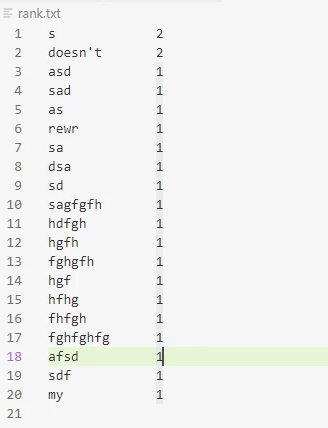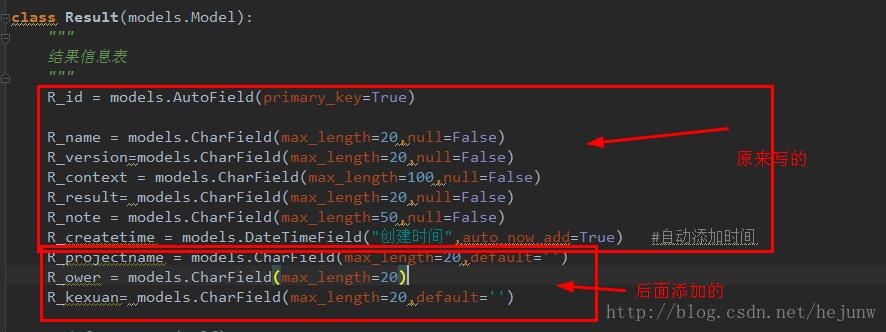python多进程下实现日志记录按时间分割
python多进程下实现日志记录按时间分割,供大家参考,具体内容如下
原理:自定义日志handler继承TimedRotatingFileHandler,并重写computeRollover与doRollover函数。其中重写computeRollover是为了能按整分钟/小时/天来分割日志,如按天分割,2018-04-10 00:00:00~2018-04-11 00:00:00,是一个半闭半开区间,且不是原意的:从日志创建时间或当前时间开始,到明天的这个时候。
代码如下:
#!/usr/bin/env python
# encoding: utf-8
"""自定义日志处理类"""
import os
import time
from logging.handlers import TimedRotatingFileHandler
class MyLoggingHandler(TimedRotatingFileHandler):
def __init__(self, filename, when='h', interval=1, backupCount=0, encoding=None, delay=False, utc=False, atTime=None):
TimedRotatingFileHandler.__init__(self, filename, when=when, interval=interval, backupCount=backupCount, encoding=encoding, delay=delay, utc=utc, atTime=atTime)
def computeRollover(self, currentTime):
# 将时间取整
t_str = time.strftime(self.suffix, time.localtime(currentTime))
t = time.mktime(time.strptime(t_str, self.suffix))
return TimedRotatingFileHandler.computeRollover(self, t)
def doRollover(self):
"""
do a rollover; in this case, a date/time stamp is appended to the filename
when the rollover happens. However, you want the file to be named for the
start of the interval, not the current time. If there is a backup count,
then we have to get a list of matching filenames, sort them and remove
the one with the oldest suffix.
"""
if self.stream:
self.stream.close()
self.stream = None
# get the time that this sequence started at and make it a TimeTuple
currentTime = int(time.time())
dstNow = time.localtime(currentTime)[-1]
t = self.rolloverAt - self.interval
if self.utc:
timeTuple = time.gmtime(t)
else:
timeTuple = time.localtime(t)
dstThen = timeTuple[-1]
if dstNow != dstThen:
if dstNow:
addend = 3600
else:
addend = -3600
timeTuple = time.localtime(t + addend)
dfn = self.rotation_filename(self.baseFilename + "." +
time.strftime(self.suffix, timeTuple))
# 修改内容--开始
# 在多进程下,若发现dfn已经存在,则表示已经有其他进程将日志文件按时间切割了,只需重新打开新的日志文件,写入当前日志;
# 若dfn不存在,则将当前日志文件重命名,并打开新的日志文件
if not os.path.exists(dfn):
try:
self.rotate(self.baseFilename, dfn)
except FileNotFoundError:
# 这里会出异常:未找到日志文件,原因是其他进程对该日志文件重命名了,忽略即可,当前日志不会丢失
pass
# 修改内容--结束
# 原内容如下:
"""
if os.path.exists(dfn):
os.remove(dfn)
self.rotate(self.baseFilename, dfn)
"""
if self.backupCount > 0:
for s in self.getFilesToDelete():
os.remove(s)
if not self.delay:
self.stream = self._open()
newRolloverAt = self.computeRollover(currentTime)
while newRolloverAt <= currentTime:
newRolloverAt = newRolloverAt + self.interval
# If DST changes and midnight or weekly rollover, adjust for this.
if (self.when == 'MIDNIGHT' or self.when.startswith('W')) and not self.utc:
dstAtRollover = time.localtime(newRolloverAt)[-1]
if dstNow != dstAtRollover:
if not dstNow: # DST kicks in before next rollover, so we need to deduct an hour
addend = -3600
else: # DST bows out before next rollover, so we need to add an hour
addend = 3600
newRolloverAt += addend
self.rolloverAt = newRolloverAt
说明
第一次修改,如有不妥之处,还请指出,不胜感激。
以上就是本文的全部内容,希望对大家的学习有所帮助,也希望大家多多支持【听图阁-专注于Python设计】。

